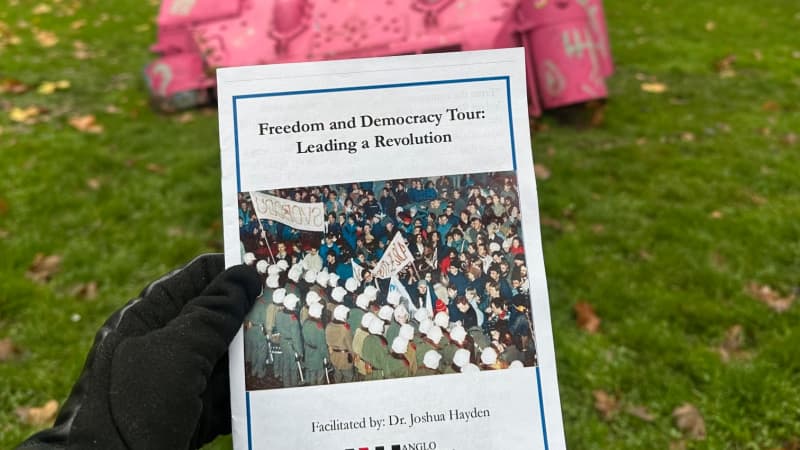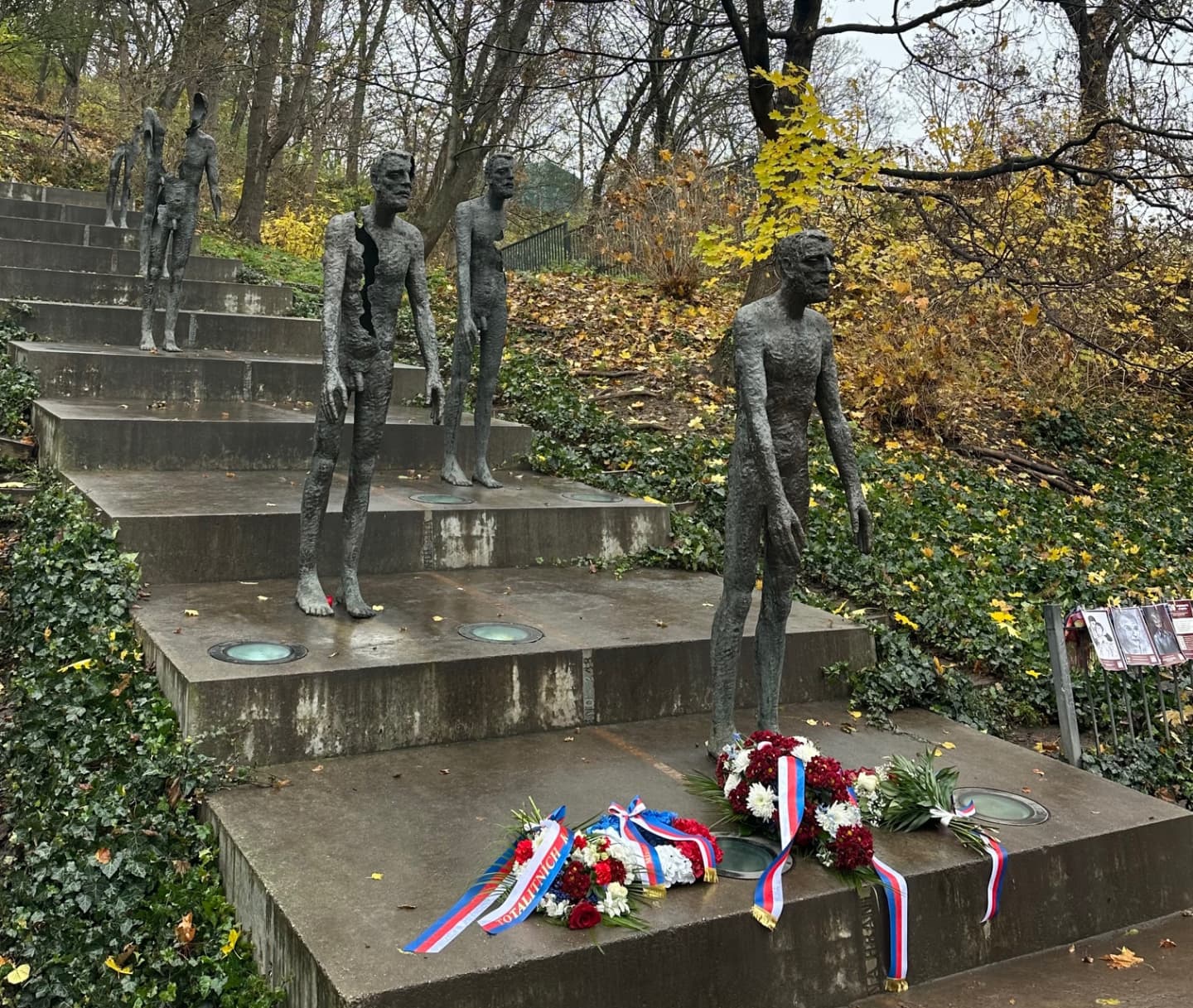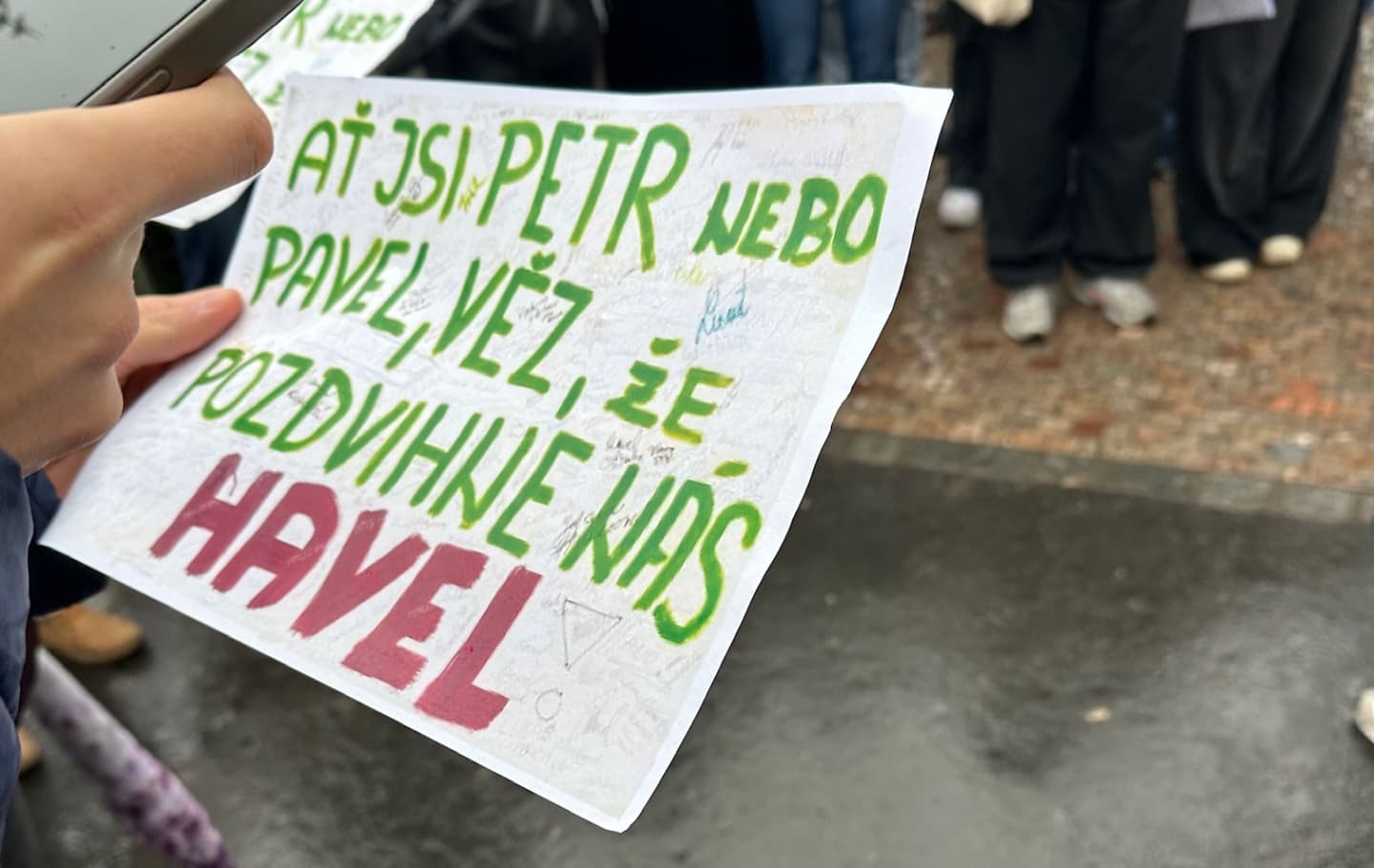Leading a Revolution Tour: November 17th

Professor Joshua Hayden, Department Chair of Social Sciences and Lecturer in Leadership Studies, led the fourth annual Freedom and Democracy tour, giving students and faculty a glimpse into the history and anniversary of the student-led movements for liberation.
Inspired by his own research into Vaclav Havel, theatre, and leaders facing adversity, Dr. Hayden developed this tour to teach Czech history through experiencing the journey that students took years before them first hand . November 17th is, for my Czechs and Slovaks, bigger than Independence Day—in some ways it was a new founding day for the country, according to Dr. Hayden.
“I love teaching through experience. I started these tours after meeting a professional Czech tour guide who taught me how to make a tour fun, interesting, deep and thoughtful,” said Dr. Hayden, “On the tour, students learn and start to see how people who were living under an oppressive regime, with no voice, actually began to find their own agency and beliefs during those dark times.”

On November 17, 1939, fascists stormed universities during the night to arrest protesters. Nine ringleaders were executed, and 1200 students were sent to concentration camps, where many died away from their homeland. University education was suspended for the next three years in Czechoslovakia. On November 17, 1989, students once again flooded the street in commemoration in the pursuit of freedom as communist soldiers ambushed unarmed protesters.
AAU’s faculty have joined the tour on multiple occasions—many of them who had first-hand experience in the Velvet Revolution and were active dissidents—bringing their children to teach them about the power of collective uprising. AAU’s own president, Jiří Schwarz, participated in the march on November 17th, 1989.
This year there was a slight de-tour which started at David Černý’s Pink Tank: a replica of the memorial to the Soviet liberation in 1945. This art piece holds significant meaning as the perception towards the Soviet Union changed throughout the decades in the Czech Republic. First it was of gratitude and progressed to fear and hatred of the totalitarian regime.
“The tank is a replica of the same tanks that liberated people in 1945 but also crushed and humiliated people in 1968. It embodies a living history of the Czech and Slovak people; it is halfway buried from the front, but it is not a tombstone because the history is not buried in the past,” commented Dr. Hayden.

From then on the tour took the traditional route, passing the Memorial to the Victims of Communism which gave participants the impression of the struggle that living under communism had on everyone. Next, they walked along Národní třída where they stopped at different photo and documentary exhibitions and even passed by the out-going Prime Minister Petr Fiala celebrating the day.
Another important stop on the tour was the Laterna Magica which served as a gathering place for the students and the headquarters of the Civic Forum (Občanské fórum). Dr. Hayden discussed some things that led up to the Velvet Revolution, including Václav Havel, his theatre, and Charter 77 which was a list of human rights abuses committed by the regime.
The last stop was at Václavské náměstí where the group made a toast to Freedom and Democracy, celebrating the hard work of students past and present towards justice. While the Velvet Revolution was not just one day—it was a movement that lasted years—this day represents the power young people have as catalysts for change.
Students today are still organizing and protesting against injustices around the world because, while the Nazis and Communist regimes of the past are gone, we have similar battles to fight today. The battle is not just a hope for change, it is the active pursuit of it.

As Vacláv Havel said: “Hope is not prognostication. It is an orientation of the spirit, an orientation of the heart, it transcends the world that is immediately experienced, and is anchored somewhere beyond its horizons.”